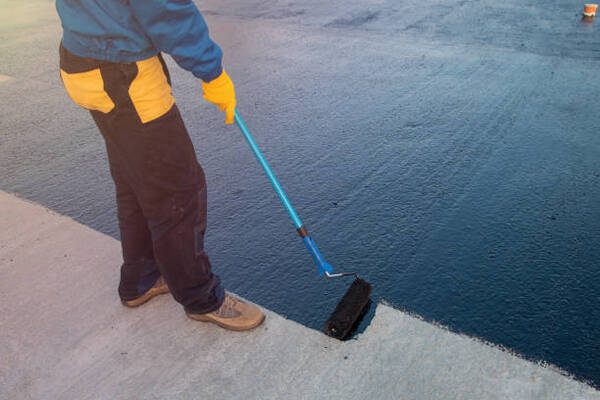- 1-905-452-8193
- Contact Us
- Member Login
- Get Listed Today
- 220,911 members

Waterproofing and sealing industrial buildings is an important task that can ensure the longevity and durability of your property. These moisture cured urethanes help protect your building from water damage and other environmental elements, like extreme temperatures, wind, humidity, and dirt.
While this may seem like a daunting task, there are several steps you can take to effectively waterproof and seal your industrial building for optimal protection.
Make use of the following tips to waterproof and seal your industrial building properly.
Start with Inspection
The first step to properly waterproofing an industrial building is to conduct a thorough inspection of the property to identify any potential problems or structural issues that could be causing moisture ingress. Look for cracks in walls or flooring, as well as gaps between window frames, doors, chimneys or skylights. You should also check all visible pipes and drainage systems to ensure they are properly sealed off from the surrounding environment. If any issues are found during the inspection phase, it’s best to address them right away before beginning the waterproofing process.
Use Quality Waterproof Materials
When selecting waterproof materials for your industrial building, you must use high-quality products that are designed specifically for this purpose. Make sure to research different products to find one that best suits your needs and budget; some common choices include concrete sealant, asphalt emulsion sealer and rubberized asphalt membrane. Additionally, make sure you purchase enough material so that you don’t run out mid-project – double-check the square footage of each area you plan on covering so you know exactly how much material to buy!
Protect Your Doors & Windows
Doors and windows are particularly vulnerable areas of industrial buildings when it comes to moisture ingress – not only do they provide direct access into the structure but they also have large amounts of glass which can easily become damaged by water over time if it’s not properly sealed off from the outside environment. Invest in quality doors and windows with weather stripping built to create an additional layer of defence against moisture entering into the building interior; this will help prevent any long-lasting damage caused by water seeping through these points of entry into your structure.
Install Gutters & Downspouts
Installing gutters around roof lines can help divert rainwater away from walls while also protecting against ice dams during winter months – similarly, downspouts can help channel water away from foundation walls which helps reduce pressure on basement walls caused by heavy rains or melting snowpacks on nearby slopes or hillsides near your property’s location. Make sure gutters are regularly cleaned out since clogging can cause excess water buildup which could eventually lead to leaks inside your building if left unchecked for too long; additionally install proper screening over downspouts if necessary to prevent leaves from clogging up their drains as well!
Seal Cracks & Gaps
Cracks and gaps between wall joints should be thoroughly inspected before starting any waterproofing process since these openings can allow rainwater or other types of moisture into a structure without being detected easily until after extensive damage has already been done inside its interior! Applying a silicone caulk is usually sufficient enough at sealing off most small cracks while larger ones may require concrete patching compound which should be applied carefully following manufacturer recommendations listed on product packaging labels closely - also do not forget about including window frames/doorways/chimneys etc…which need similar attention too so that no moisture seeps through those points either!
Use Coating Systems
In addition to filling in any existing cracks or gaps around a structure’s perimeter, coating systems offer added protection against water damage by creating an impermeable barrier between exterior surfaces such as concrete blocks, brick masonry etc…and the environment outside - some popular choices include elastomeric coatings (which act like rubber), acrylic latex paints (which breathe while preventing mould growth), urethane-based formulas which retain colour longer than others due their highly durable finish properties plus many more…so pick whichever one best suits both yours needs budget wise while providing maximum protection too!
Apply Waterproof Membranes
Applying waterproof membranes is another effective method used oftentimes when it comes to securing a structure against harsh weather conditions such as flooding rain showers - these membranes stick directly onto surfaces after being applied using trowel-like tools creating seamless bonds which will keep out large quantities of liquid without fail! Popular options include bituminous membranes (made from tar), polyurethane sheets (which form rigid protective layers), and PVC sheets (known for their flexibility) among others…allowing plenty of room to choose, depending upon the application requirements needed at hand.
